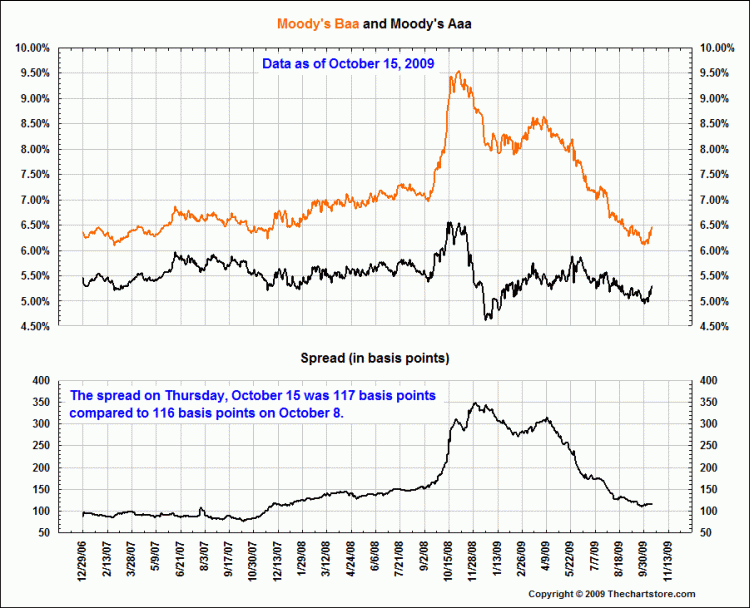Government bonds are considered risk-free (governments can always print money to pay off debt – this is particularily true for the US as it issues its debt in US Dollars. Countries mostly go bankrupt because they issued debt in foreign currency and then have a currency crisis – which makes their foreign debt increase in local currency value).
Corporate bonds are usually not guaranteed by the government. The investor has to evaluate the risk the company would be unable to repay the debt and will demand a price for that risk. This is called the risk premium.
Rating agencies grade issuers of debt according to their ability to withstand adverse economic conditions and still pay interest and principal. Better rated companies (eg AAA, AA, A, BBB, so called investment grade) have a lower risk premium than weaker ones (BB, B, CCC, CC, C, D, so called junk). The premium evolves over time. Here’s a chart looking at the risk premium of Aaa (= AAA in S&P speak) and Baa (= BBB) corporate bonds, with the difference in the lower chart:

Source: www.TheChartStore.com
As you can see the risk premium of 117 basis points (1oo bp = 1%) is significantly below where is was before the crisis (September 2009) emerged. Moral hazard (the expectation that a large company getting in financial trouble would be bailed out by the government rather than let go into bankruptcy) has surely contributed to this development.
Other than Lehman there have been few headline-creating bankruptcies so far (despite the severity of the economic decline). Fading-out of the government stimulus could lead to another recession in 2010 or 2011. If the banking system proves to remain half-way stable, further government bail-outs are unlikely. Hence I would expect bankruptcies to increase – with a corresponding effect on the risk premium.
